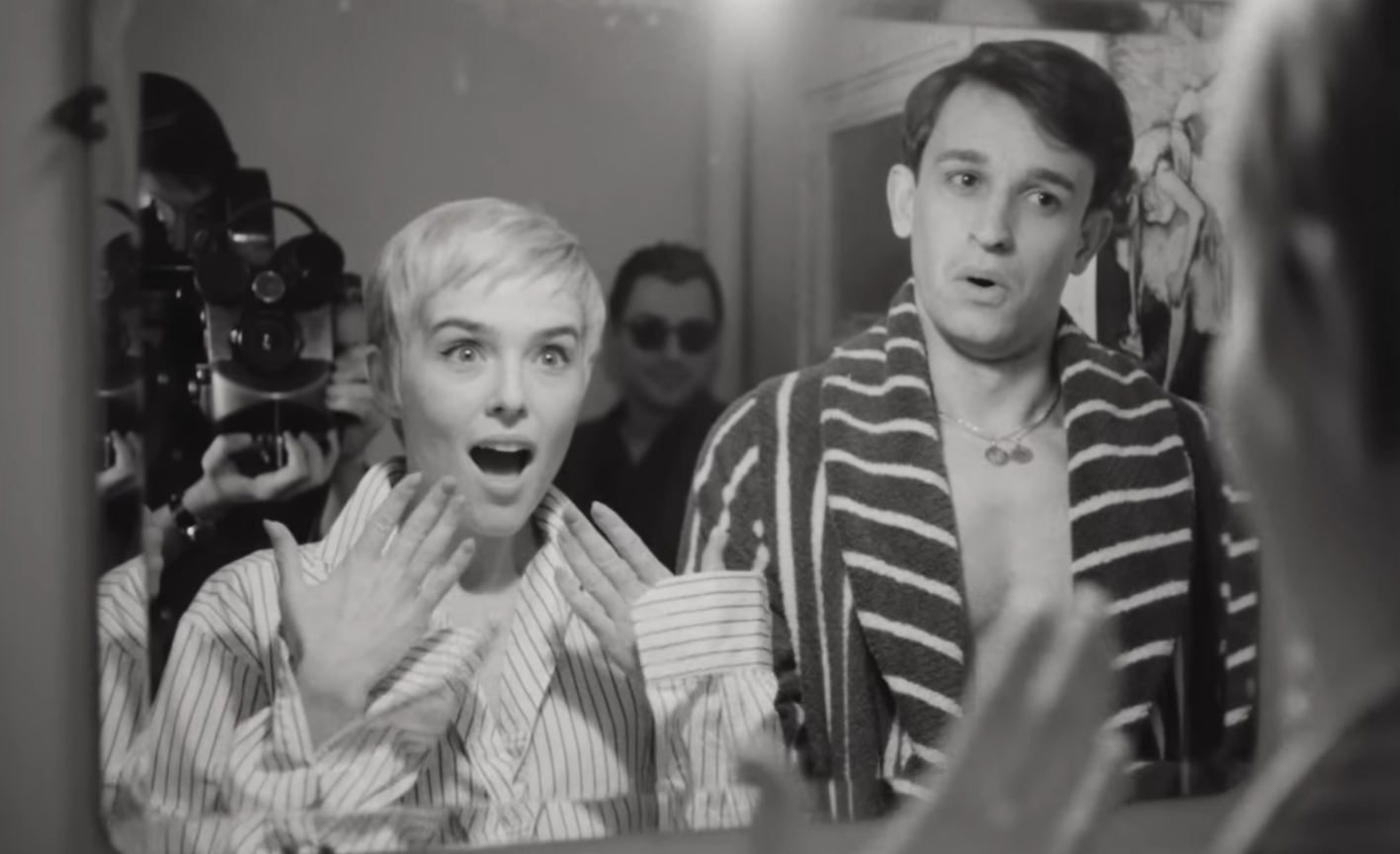
Courtesy of Netflix

Audio By Carbonatix
Texas has spawned many great filmmakers, but there may not be another writer-director from the Lone Star State who has shown as much pride in his heritage as Richard Linklater. A Houston native who cut his teeth as a filmmaker in Austin, Linklater first rose to prominence when his low-budget Texan dramedies, Slacker and Dazed and Confused, became bonafide cult classics in the early ‘90s.
In the three decades since, Linklater has developed many projects both in and outside the Lone Star State, and helped to launch the careers of such famous Texas actors as Ethan Hawke, Matthew McConaughey and Glen Powell.
Linklater has never been denied acclaim, having earned several Academy Award nominations for his landmark 2014 feature Boyhood, a coming-of-age drama about a young Texas boy, which was shot over the course of 12 years. That being said, Linklater has also resisted the urge to be comfortable with his own success, as he’s one of the most active writer-directors in the industry right now. There’s no better evidence than Linklater’s 2025 output, as he’s directed two new acclaimed films that North Texan audiences can now catch.
Given that Linklater has always shown an interest in stories about great artists who were ahead of their time, it seems natural that his 2025 double feature would examine two very different works of modernist storytelling, both of which had a distinctive influence on his own career.
This year, make your gift count –
Invest in local news that matters.
Our work is funded by readers like you who make voluntary gifts because they value our work and want to see it continue. Make a contribution today to help us reach our $30,000 goal!
Blue Moon reunited him with Hawke, who stars as the venerable lyricist Lorenz Hart, best known for his collaborations with Richard Rodgers (played by Andrew Scott). Inversely, Nouvelle Vague is Linklater’s first foreign-language production, as it is set during the “French New Wave” movement in cinema during the 1960s amidst the production of the future classic, Breathless.
The hopefulness of youth and the regrets of age are two topics that Linklater has frequently highlighted, and in many ways Blue Moon and Nouvelle Vague split the difference between these two seemingly contradictory notions. In Blue Moon, Hart is bitter about the success of Rodgers, who went on to find great success with Oklahoma!, the first show he created with his new collaborator Oscar Hammerstein II (Simon Delaney). The entire film takes place over the course of a single evening, in which Hart comes to recognize that success may have passed him by. Despite the warmth and excitability that Hawke brings to what may be his single greatest performance yet, the opening title cards of Blue Moon solemnly reveal that Hart was only four months away from death, a result of his unbridled alcoholism.
Nouvelle Vague is caked in the whimsy and enthusiasm that Blue Moon is purposefully lacking, as it takes place at an interesting point in cinematic history in which young people were empowered to make their own films outside of the studio system. Notable French filmmakers like François Truffaut, Agnès Varda, Jean Cocteau and Roberto Rossellini broke all the rules by making impressionistic, idiosyncratic films that rested on their snappy dialogue and inventive camerawork. Such cinematic tools can clearly be seen in Linklater’s own work. In order to fully capture how novel it was for the former critic Jean-Luc Godard (Guillaume Marbeck) to make a groundbreaking classic at the age of 29, Linklater shot Novelle Vague in the same black-and-white, handheld style of Breathless.
Blue Moon debuted at the Berlin Film Festival in February, where Scott’s performance earned him the festival’s noteworthy Best Supporting Actor trophy. Being a French production, Nouvelle Vague had its premiere at the Cannes Film Festival, where the love letter to Paris cinema earned rave reviews from the event’s attendees, including a particularly emotional Quentin Tarantino.
A great filmmaker like Linklater has the ability to make projects that are beyond his personal experience, but both Blue Moon and Nouvelle Vague were seemingly built out of passions that he developed in his home state. Linklater revealed at the New York Film Festival that his interest in the projects was born out of attending repertory movie-houses and musical theaters growing up, which inspired a lifelong interest in both French cinema and classical Broadway productions.
As much as Blue Moon and Nouvelle Vague are both love letters to specific moments in history, they were achieved thanks to the groundbreaking work Linklater achieved in his Texan films. Blue Moon is noteworthy because of its long takes, which resemble the production of an actual stage play; Linklater directed cinematic adaptations of Tape and SubUrbia on shoestring budgets in Texas. Nouvelle Vague may be a period piece, but the loose, inviting style is reminiscent of the “hangout movie” subgenre that Linklater helped to develop with his Texas classics like Dazed and Confused and Everybody Wants Some.
If Linklater’s goal was to take these pinnacles of showbusiness and make them accessible to modern audiences, then it’s fitting that Texas audiences will be among the first to appreciate them. Although most films distributed by Netflix are not given a robust theatrical release, Nouvelle Vague will be available on the big screen in several Texas chains, including the Dallas Angelika Film Center’s location. Dallas will also be among the cities to receive Blue Moon in its limited release as the film will inevitably expand as it gains momentum in award season.
Above all, though Linklater has now operated on a broader canvas than ever before in his career, his roots are still firmly planted by Texas.